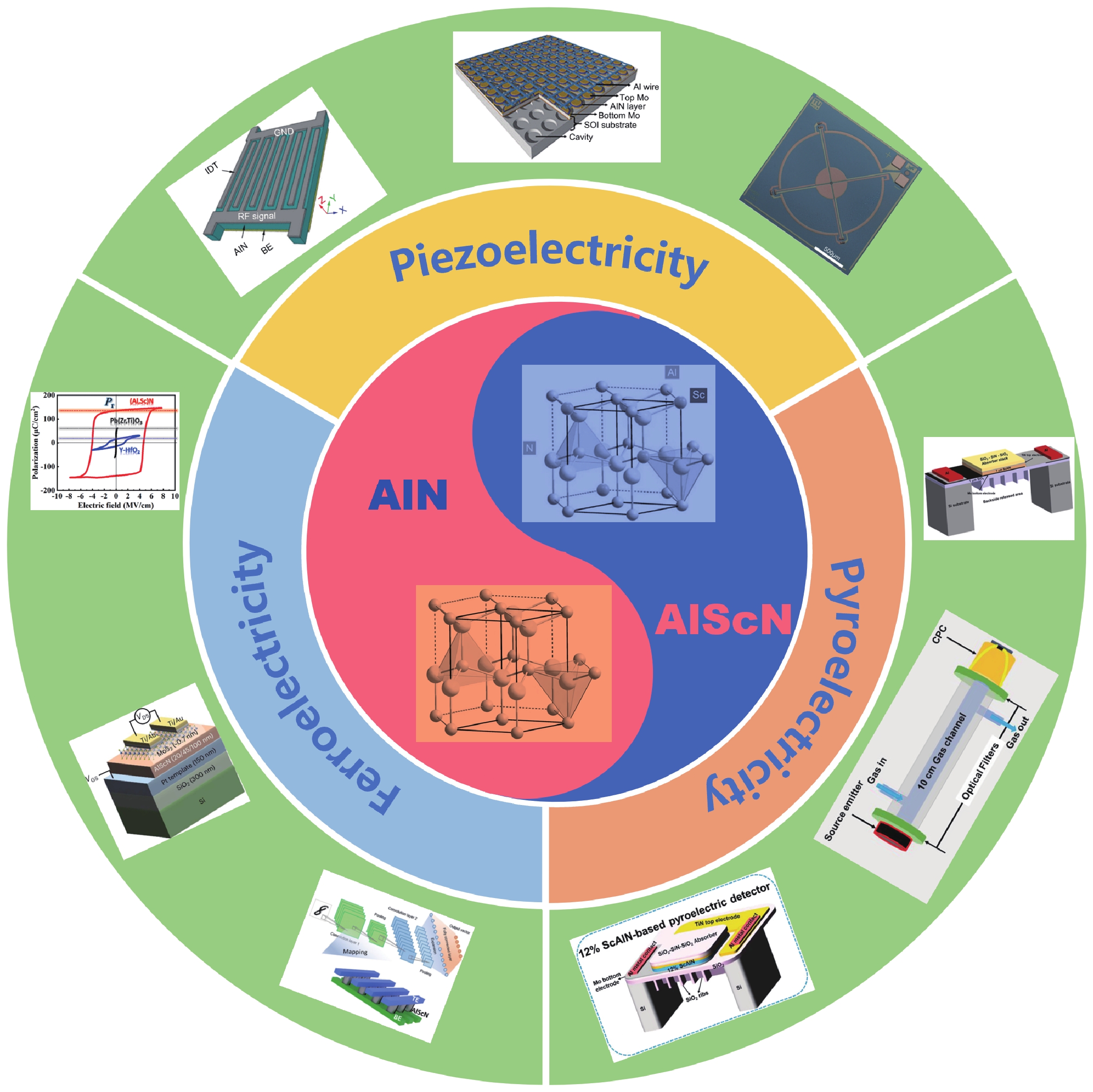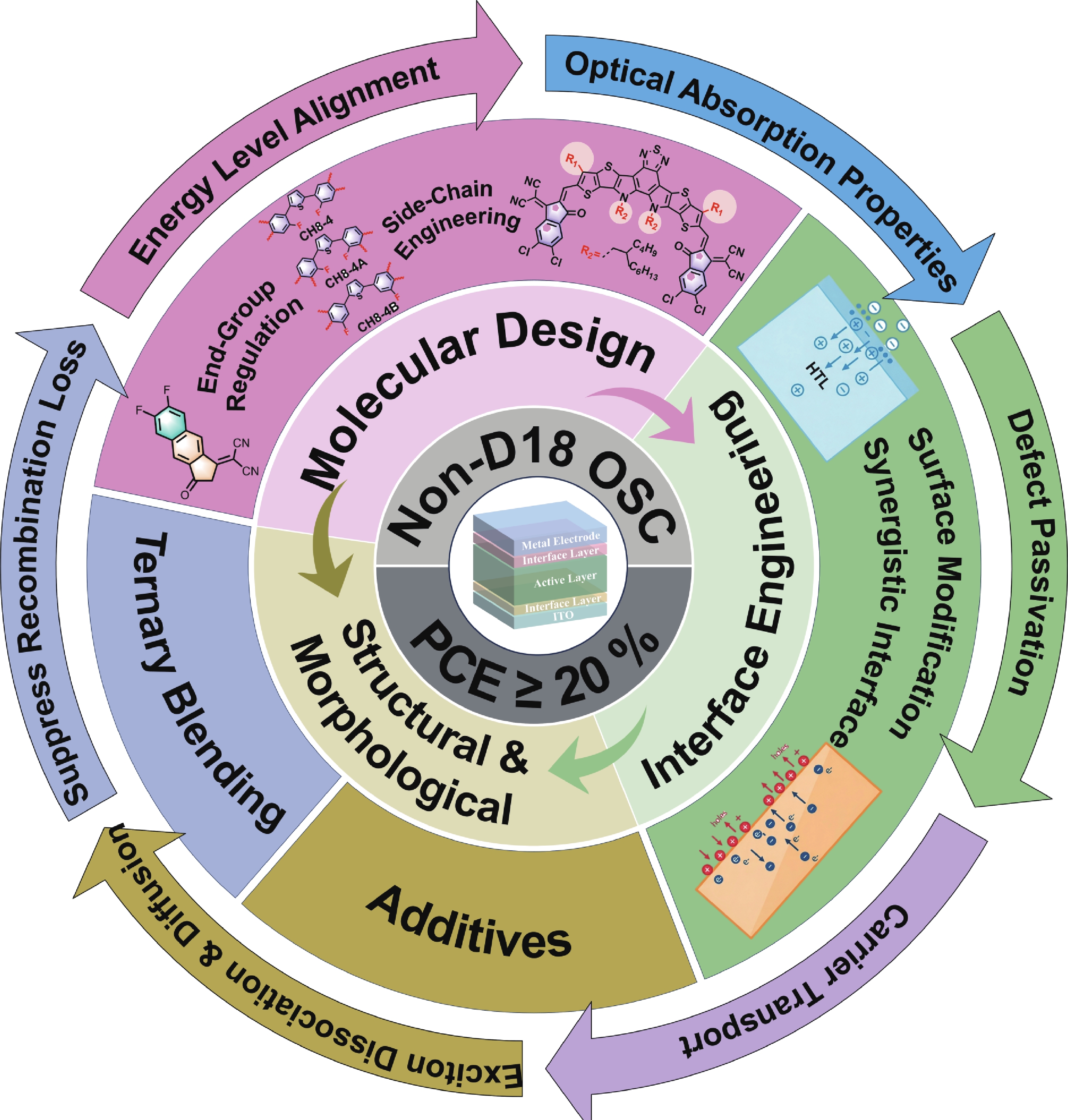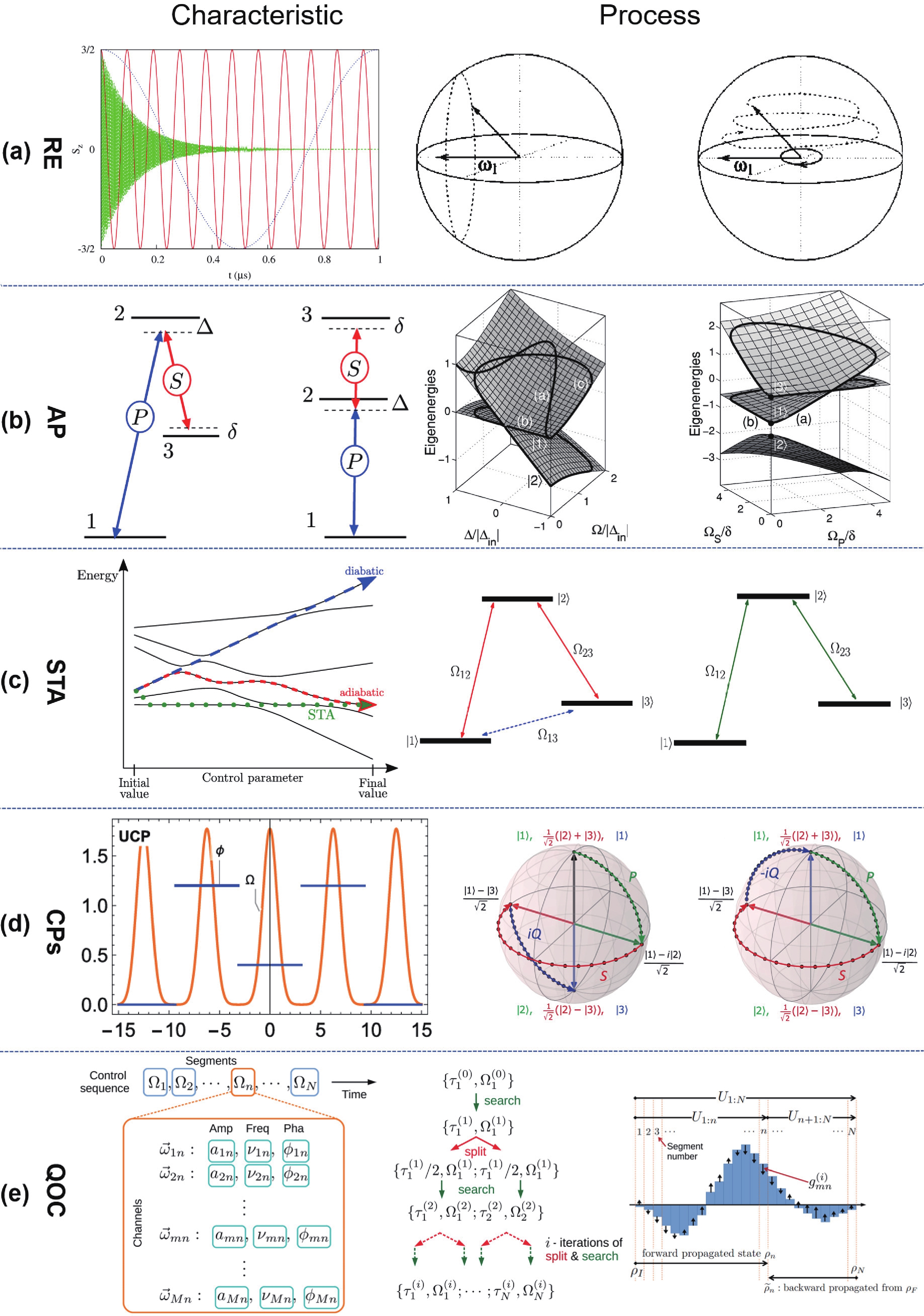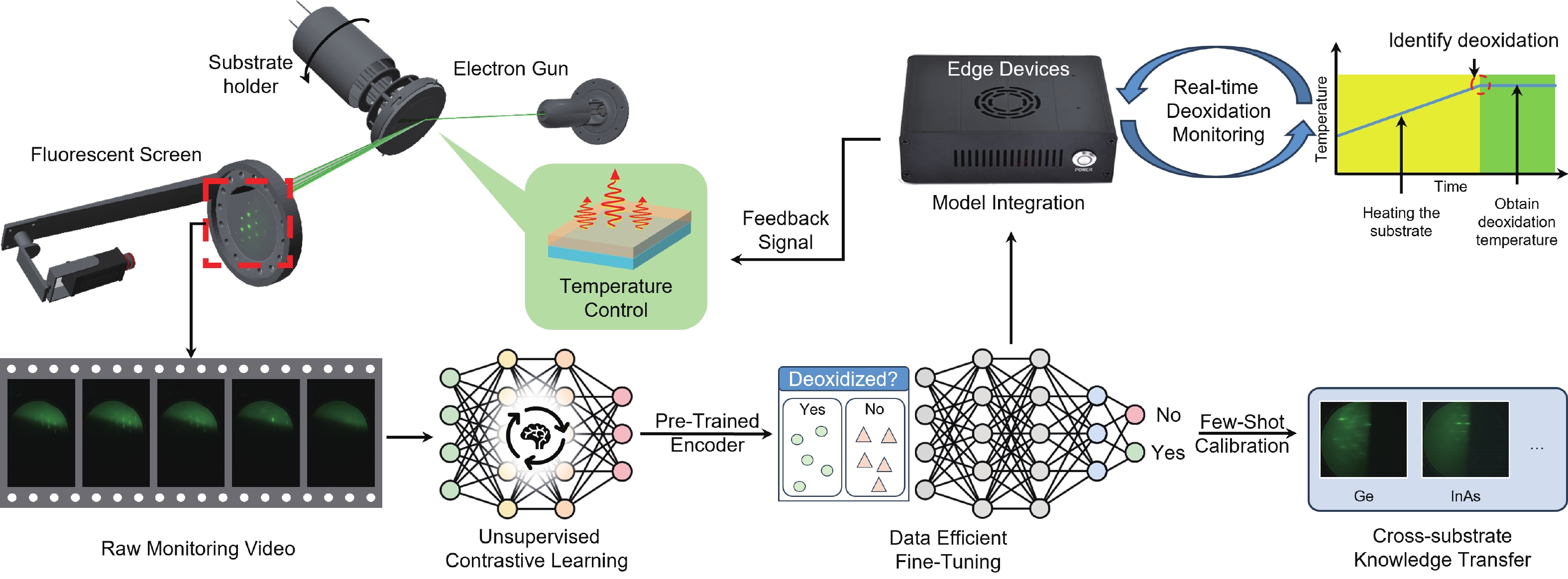J. Semicond.
Volume 46, Issue 11, Nov 2025



Call for Papers
Focus Collection on Pathways to Advanced Flexible Electronics: Materials, Structures, and Systems
Guest Editors: Rongrong Bao, Desheng Kong, La Li, Chunfeng Wang, Yue Liu

Call for Papers
Special Issue on Optoelectronic Neuromorphic Devices
Guest Editors: Zhenyi Ni, Zhongqiang Wang, Jia Huang, Xiaodong Pi

Call for Papers
Special Issue on Flexible and Smart Electronics for Sensors 4.0
Guest Editors: Zhuoran Wang, Yang Li, Qilin Hua

Call for Papers
Towards High Performance Ga2O3 Electronics: Epitaxial Growth and Power Devices
Guest Editors: Genquan Han, Shibing Long, Yuhao Zhang, Yibo Wang

Call for Papers
Novel Semiconductor-Biochemical Sensors
Guest Editors: Zhao Li, Xiangmei Lin, Dongxian He, Yingxin Ma, Yuanjing Lin

Special Issue
Flexible Energy Devices
Guest Edited: Zhiyong Fan, Yonghua Chen, Yuanjing Lin, Yunlong Zi, Hyunhyub Ko, Qianpeng Zhang

Special Issue
Semiconductor Optoelectronic Integrated Circuits
Guest Edited: Wei Wang, Lingjuan Zhao, Dan Lu, Jianping Yao, Weiping Huang, Yong Liu, Brent Little

Special Issue
Beyond Moore: Three-Dimensional (3D) Heterogeneous Integration
Guest Edited: Yue Hao, Huaqiang Wu, Yuchao Yang, Qi Liu, Xiao Gong, Genquan Han, Ming Li

Special Issue
Beyond Moore: Resistive Switching Devices for Emerging Memory and Neuromorphic Computing
Guest Edited: Yue Hao, Huaqiang Wu, Yuchao Yang, Qi Liu, Xiao Gong, Genquan Han, Ming Li

Special Issue
Celebration of the 60th Anniversary of Dedicating to Scientific Research of Prof. Zhanguo Wang
Guest Editors: Zhijie Wang, Chao Zhao , Fei Ding

Special Issue
Reconfigurable Computing for Energy Efficient AI Microchip Technologies
Guest Editors: Haigang Yang, Yajun Ha, Lingli Wang, Wei Zhang, Yingyan Lin


Special Issue
Semiconductor Materials Genome Initiative: New Concepts and Discoveries
Guest Editors: Suhuai Wei, Junwei Luo, Bing Huang

Special Issues
2D-materials-related physical properties and optoelectronic devices
Guest Editors: Ping-Heng Tan, Lijun Zhang, Lun Dai, Shuyun Zhou

Special Issue
Flexible and Wearable Sensors for Robotics and Health
Guest Editors: Zhiyong Fan, Johnny C. Ho, Chuan Wang, Yun-Ze Long, Huan Liu



Special Issue
Si-Based Materials and Devices
Guest Editors: Chuanbo Li, Linwei Yu, Jinsong Xia

Special Issue
Devices and Circuits for Wearable and IoT Systems
Guest Editors: Zhihua Wang, Yong Hei, Zhangming Zhu

Special Issue
Flexible and Wearable Electronics: from Materials to Applications
Guest Editors: Guozhen Shen, Yongfeng Mei, Chuan Wang, Taeyoon Lee

News
First time: Science Cites Journal of Semiconductors

News
JOS has been indexed in ESCI database since 2016
 Abstract
Abstract
 Full Text
Full Text
 PDF
Aluminum scandium nitride (AlScN), an emerging Ⅲ-nitride semiconductor material, has attracted significant attention in recent years due to its exceptional piezoelectric properties, high thermal stability, tunable bandgap, and excellent compatibility with micro/nano fabrication. This paper systematically reviews the crystal structure, fundamental properties, and property modulation mechanisms of AlScN. It also summarizes recent progress in micro/nano fabrication technologies, including deposition, etching, and device integration. Furthermore, the applications of AlScN in diverse fields such as micro-electromechanical systems (MEMS), RF communications, energy conversion, optoelectronics and sensors are discussed. Finally, current challenges and promising future research directions for AlScN are outlined.
PDF
Aluminum scandium nitride (AlScN), an emerging Ⅲ-nitride semiconductor material, has attracted significant attention in recent years due to its exceptional piezoelectric properties, high thermal stability, tunable bandgap, and excellent compatibility with micro/nano fabrication. This paper systematically reviews the crystal structure, fundamental properties, and property modulation mechanisms of AlScN. It also summarizes recent progress in micro/nano fabrication technologies, including deposition, etching, and device integration. Furthermore, the applications of AlScN in diverse fields such as micro-electromechanical systems (MEMS), RF communications, energy conversion, optoelectronics and sensors are discussed. Finally, current challenges and promising future research directions for AlScN are outlined.
 Abstract
Abstract
 Full Text
Full Text
 PDF
Significant progress has been achieved in the field of organic solar cells (OSCs). Most devices with power conversion efficiencies (PCEs) exceeding 20% rely predominantly on active materials that incorporate D18 or its derivatives as the donor. In contrast, the PCEs over 20% have been realized as well for OSCs with the non-D18-based donor materials by simultaneously optimizing material properties, active layer morphologies and interface engineering, thereby demonstrating the potential to outperform D18 counterparts. Therefore, this review summarizes an overview of recent advancements in OSCs with the PCEs over 20% utilizing the non-D18-based donor materials, and highlights three critical aspects including molecular design strategies, the active layer morphologies, and the interface optimization. Their synergistic roles are advantageous in enhancing the exciton dissociation, facilitating the charge transport, and suppressing the recombination losses, accordingly supporting the improved PCEs over 20%. Furthermore, the challenges and valuable insights are discussed, which can lead to improved efficiency, scalable fabrication, and enhanced environmental and thermal stability, potentially accelerating the commercialization of OSCs.
PDF
Significant progress has been achieved in the field of organic solar cells (OSCs). Most devices with power conversion efficiencies (PCEs) exceeding 20% rely predominantly on active materials that incorporate D18 or its derivatives as the donor. In contrast, the PCEs over 20% have been realized as well for OSCs with the non-D18-based donor materials by simultaneously optimizing material properties, active layer morphologies and interface engineering, thereby demonstrating the potential to outperform D18 counterparts. Therefore, this review summarizes an overview of recent advancements in OSCs with the PCEs over 20% utilizing the non-D18-based donor materials, and highlights three critical aspects including molecular design strategies, the active layer morphologies, and the interface optimization. Their synergistic roles are advantageous in enhancing the exciton dissociation, facilitating the charge transport, and suppressing the recombination losses, accordingly supporting the improved PCEs over 20%. Furthermore, the challenges and valuable insights are discussed, which can lead to improved efficiency, scalable fabrication, and enhanced environmental and thermal stability, potentially accelerating the commercialization of OSCs.
 Abstract
Abstract
 Full Text
Full Text
 PDF
Quantum control allows a wide range of quantum operations employed in molecular physics, nuclear magnetic resonance and quantum information processing. Thanks to the existing microelectronics industry, semiconducting qubits, where quantum information is encoded in spin or charge degree freedom of electrons or nuclei in semiconductor quantum dots, constitute a highly competitive candidate for scalable solid-state quantum technologies. In quantum information processing, advanced control techniques are needed to realize quantum manipulations with both high precision and noise resilience. In this review, we first introduce the basics of various widely-used control methods, including resonant excitation, adabatic passage, shortcuts to adiabaticity, composite pulses, and quantum optimal control. Then we review the practical aspects in applying these methods to realize accurate and robust quantum gates for single semiconductor qubits, such as Loss–DiVincenzo spin qubit, spinglet-triplet qubit, exchange-only qubit and charge qubit.
PDF
Quantum control allows a wide range of quantum operations employed in molecular physics, nuclear magnetic resonance and quantum information processing. Thanks to the existing microelectronics industry, semiconducting qubits, where quantum information is encoded in spin or charge degree freedom of electrons or nuclei in semiconductor quantum dots, constitute a highly competitive candidate for scalable solid-state quantum technologies. In quantum information processing, advanced control techniques are needed to realize quantum manipulations with both high precision and noise resilience. In this review, we first introduce the basics of various widely-used control methods, including resonant excitation, adabatic passage, shortcuts to adiabaticity, composite pulses, and quantum optimal control. Then we review the practical aspects in applying these methods to realize accurate and robust quantum gates for single semiconductor qubits, such as Loss–DiVincenzo spin qubit, spinglet-triplet qubit, exchange-only qubit and charge qubit.
 Abstract
Abstract
 Full Text
Full Text
 PDF
Metal halide perovskites (MHPs) have become promising optoelectronic materials due to their long carrier lifetimes and high mobility. However, the presence of defects and ion migration in MHPs results in high and unstable dark currents, which compromise the stability and detection performance of MHP-based optoelectronic devices. Interfacial engineering has proven to be an effective strategy to reduce defect density in MHPs and suppress ion migration. Given the compatibility of silicon (Si) and MHP processing technologies, coupled with the simplicity and cost-effectiveness of the approach, the integration of MHPs onto Si surfaces has become a prominent area of research. This integration not only enhances device performance but also expands their practical applications. This review provides an overview of the integration technologies for Si and single crystal MHPs, evaluates the advantages and limitations of various integration schemes (including inverse temperature crystallization, vacuum-assisted vapor deposition, and anti-solvent vapor-assisted crystallization), and explores the practical applications of Si/MHP-integrated optoelectronic devices with different structures. These optimized devices exhibit outstanding performance in X-ray detection, multi-wavelength photodetection, and circularly polarized light detection. This review provides a systematic reference for technological innovation and application expansion of Si/MHP-integrated devices.
PDF
Metal halide perovskites (MHPs) have become promising optoelectronic materials due to their long carrier lifetimes and high mobility. However, the presence of defects and ion migration in MHPs results in high and unstable dark currents, which compromise the stability and detection performance of MHP-based optoelectronic devices. Interfacial engineering has proven to be an effective strategy to reduce defect density in MHPs and suppress ion migration. Given the compatibility of silicon (Si) and MHP processing technologies, coupled with the simplicity and cost-effectiveness of the approach, the integration of MHPs onto Si surfaces has become a prominent area of research. This integration not only enhances device performance but also expands their practical applications. This review provides an overview of the integration technologies for Si and single crystal MHPs, evaluates the advantages and limitations of various integration schemes (including inverse temperature crystallization, vacuum-assisted vapor deposition, and anti-solvent vapor-assisted crystallization), and explores the practical applications of Si/MHP-integrated optoelectronic devices with different structures. These optimized devices exhibit outstanding performance in X-ray detection, multi-wavelength photodetection, and circularly polarized light detection. This review provides a systematic reference for technological innovation and application expansion of Si/MHP-integrated devices.
 WeChat ID
WeChat ID

 Mobile Terminal
Mobile Terminal
Journal of Semiconductors © 2017 All Rights Reserved 京ICP备05085259号-2








